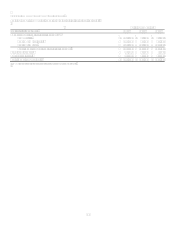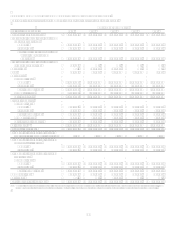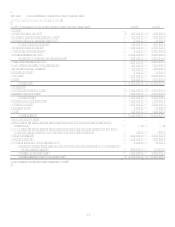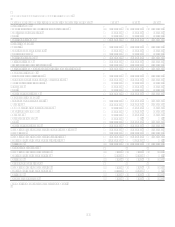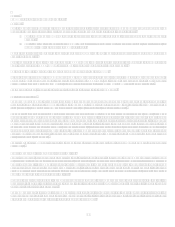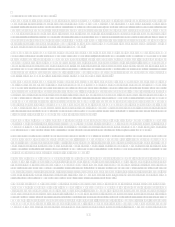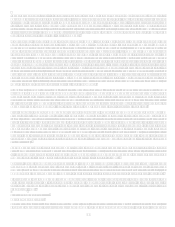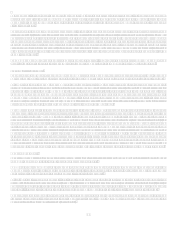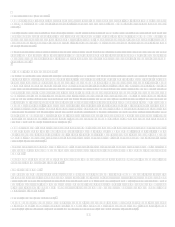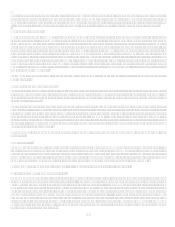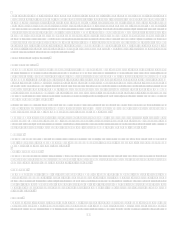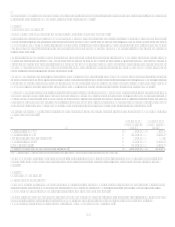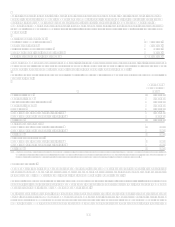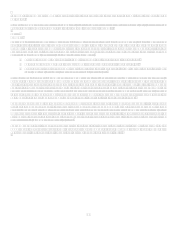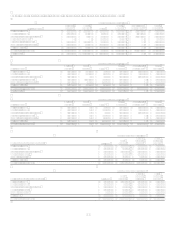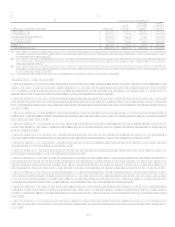Capital One 2007 Annual Report Download - page 91
Download and view the complete annual report
Please find page 91 of the 2007 Capital One annual report below. You can navigate through the pages in the report by either clicking on the pages listed below, or by using the keyword search tool below to find specific information within the annual report.69
billion, respectively. Cash paid for income taxes for the years ended December 31, 2007, 2006 and 2005 was $1.5 billion, $1.5 billion
and $654.8 million, respectively.
Securities Available for Sale
The Company classifies all debt securities as securities available for sale. These securities are stated at fair value, with the unrealized
gains and losses, net of tax, reported as a component of cumulative other comprehensive income. The fair value of securities is based
on quoted market prices, or if quoted market prices are not available, then the fair value is estimated using the quoted market prices
for similar securities, pricing models or discounted cash flow analyses, using observable market data where available. The amortized
cost of debt securities is adjusted for amortization of premiums and accretion of discounts to maturity. Such amortization or accretion
is included in interest income. Realized gains and losses on sales of securities are determined using the specific identification method.
The Company evaluates its unrealized loss positions for impairment in accordance with FASB Statement No. 115, Accounting for
Certain Investments in Debt and Equity Securities, as amended by FASB Staff Position No. 115-1, The Meaning of Other-Than-
Temporary Impairment and its Application to Certain Investments. See Note 5 for additional details.
Mortgage Loans Held for Sale
The Company classifies loans originated with the intent of selling in the secondary market as held for sale. Loans originated for sale
are primarily sold in the secondary market as whole loans. Whole loan sales are executed with either the servicing rights being
retained or released to the buyer. For sales where the loans are sold with the servicing released to the buyer, the gain or loss on the sale
is equal to the difference between the proceeds received and the carrying value of the loans sold. If the loans are sold with the
servicing rights retained, the gain or loss on the sale is also impacted by the fair value attributed to the servicing rights. In the third
quarter of 2007, the Company shut down the mortgage origination operations of its wholesale mortgage banking unit, GreenPoint
Mortgage. The results of the mortgage origination operation of GreenPoint have been accounted for as discontinued operations and
have been removed from the Companys results of continuing operations for all periods presented. The results of GreenPoints
mortgage servicing business continue to be reported as part of the Companys continuing operations.
Mortgage loans held for sale are carried at the lower of aggregate cost, net of deferred fees, deferred origination costs and effects of
hedge accounting, or fair value. The fair value of mortgage loans held for sale is determined using current secondary market prices for
loans with similar coupons, maturities and credit quality. The fair value of mortgage loans held for sale is impacted by changes in
market interest rates. The exposure to changes in market interest rates is hedged primarily by selling forward contracts on agency
securities. These derivative instruments, designated as fair value hedges, are recorded on the balance sheet at fair value with changes
in fair value being recorded in mortgage banking operations in current earnings. Also changes in the fair value of mortgage loans held
for sale are recorded as an adjustment to the loans carrying basis through mortgage banking operations income in current earnings.
Prior to the shutdown of GreenPoint Mortgage, the Company entered into commitments to originate or purchase loans whereby the
interest rate of the loan was determined prior to funding (interest rate lock commitment). Interest rate lock commitments on
mortgage loans that the Company intended to sell in the secondary market were considered freestanding derivatives. These derivatives
were carried at fair value with changes in fair value reported as a component of gain on sale of the loans. As of December 31, 2007,
the Company has no loan commitments due to the shutdown of the mortgage origination operations of GreenPoint Mortgage. See Note
25 for additional details on mortgage banking derivatives.
As of December 31, 2007 and 2006, the balance in mortgage loans held for sale was $0.3 billion and $10.4 billion, respectively.
Consumer Loan Securitizations
The Company primarily securitizes credit card loans, auto loans and installment loans. Securitization provides the Company with a
significant source of liquidity and favorable capital treatment for securitizations accounted for as off-balance sheet arrangements. See
Note 23Off-Balance Sheet Securitizations for additional detail.
Loan securitization involves the transfer of a pool of loan receivables to a trust or other special purpose entity. The trust sells an
undivided interest in the pool of loan receivables to third-party investors through the issuance of asset backed securities and distributes
the proceeds to the Company as consideration for the loans transferred. The Company removes loans from the reported financial
statements for securitizations that qualify as sales in accordance with SFAS No. 140, Accounting for Transfers and Servicing of
Financial Assets and Extinguishment of Liabilitiesa Replacement of SFAS No. 125 (SFAS 140). Alternatively, when the transfer
would not be considered a sale but rather a financing, the assets will remain on the Companys reported financial statements with an
offsetting liability recognized in the amount of proceeds received.
Interests in the securitized and sold loans may be retained in the form of subordinated interest-only strips, subordinated tranches, cash
collateral and spread accounts. The Company also retains a sellers interest in the credit card receivables transferred to the trusts which
is carried on a historical cost basis and classified as loans held for investment on the Reported Consolidated Balance Sheet.


